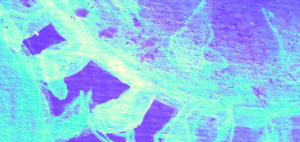All-Natural and Allergy Free Life – What’s on the Menu?
An excerpt from the new nutrition book, The Evolution Diet: All Natural and Allergy Free.
The !Kung Bushmen (also known as the !Kung San) have adapted to their desert surroundings quite well, keeping close to water and procuring food from a wide variety of plants and animals. Every adult in the typical !Kung clan is involved in foraging and/or hunting. The most important staple in the !Kung San diet is the mongongo nut (what they call the //’’xa), which has the macronutrient equivalent of peanuts—high in fat and protein and many vitamins and minerals. The tree also shares a fruit in the summer that has a nutritional composition complementary to the nut (high in carbohydrates and other vitamins and minerals).
Another staple is the baobab fruit, which is rich in vitamin C, calcium, and magnesium. The tsin bean and the vegetable ivory fruit are also attractive options on the !Kung people’s Kalahari menu. In all, there are over 100 species of plants that make up the !Kung diet including roots, bulbs, berries, melons, and edible gums. If you don’t think 100 species is a lot, I challenge you to write down 100 species of plants that you consume on a regular basis—you may be surprised at what you come up with!
With regard to meat, the !Kung diet is just as diverse. Anything from large game to small animals can be found on the menu. The hunters of the camp (usually men) will go out on a hunting expedition for up to 6 days in search of big antelope, kudu, wildebeest, and gemsbok, armed with poison-tipped arrows. When the hunters return, the village feasts on the fresh meat. In all, meat comprises from 20-50 percent of the !Kung diet by weight. When big game is not available due to the season, smaller mammals (usually trapped by the women of the village) supplement the diet.
So, there you have it, the typical hunter/gatherer diet: nuts, fruits, roots, and berries throughout the day and wild-animal meat after the hunt. It is the definition of healthy eating and is what sustained the human species (the descendants of the !Kung and you) through hundreds of thousands of years. This is the diet what we promote in The Evolution Diet.
When you extend the principles of the !Kung to natural hunter/gatherers in different ages and regions of the world, the menu opens up to an array of similar all-natural and allergy free foods. To start, the !Kung don’t fish, but that’s certainly due to the lack of fisheries and rivers in the middle of the Kalahari desert, not due to lack of ability or distaste for fish. Most of what we know about ancient hunter/gatherer societies is that fishing was a main component of their existence and if there were any coastal hunter/gatherers around today, we’d probably find the same thing. In fact, the closest to that lifestyle is shared with the Inuit people of the Arctic Circle, who almost exclusively eat fish. The Evolution Diet doesn’t just recommend mongongo nuts and fruit; it promotes pretty much all fruits and vegetables and all lean meats.
In this respect, the natural hunter/gatherer diet is diverse. Whereas the typical Western diet derives nearly all of its vegetarian foods from a few staple crops (corn, soybeans, wheat, rice), and most of the meat comes from animals fed with the same four crops (most likely corn), the !Kung and others like them are open to nearly all of nature’s bounty.
There are things that typical Westerners eat that traditional hunter/gatherers don’t eat, however. Some noticeable foods missing from the above rundown of a natural hunter/gatherer diet are grasses (such as wheat), dairy products (such as milk), and legumes, among others. The main reason that the !Kung Bushmen and other hunter/gatherers avoided these foods is that they are toxic (or at least indigestible) in their raw state, making them what nutritionists have termed anti-nutrients. Uncooked wheat contains phytate, which binds important minerals like magnesium and calcium in our bodies, contributing to mineral deficiencies. Milk contains the sugar lactose, which cannot be digested by a majority of the adult population. And soybeans contain hemagglutinins, which promote red blood cell clumping and significantly suppresses growth.
So, naturally, if prehistoric hunter/gatherers ate those foods, they would not have lasted as long as they did and perhaps our species would have ceased to exist. But something happened about 10,000 years ago—humans discovered cooking. At that time, some brilliant caveman or woman somehow thought to heat up his mush made of grains and water instead of using it as Silly Putty and, voilà, the village had bread! Around the same time, people started to ferment the milk products from their family cows and were able to produce cheese or yogurt. There were, of course, benefits to this cooked form of grain and milk product; they were easier to transport and easy to store; they were dense in calories; and, most importantly, they weren’t nearly as toxic as their raw counterparts. Cooking eliminates many of the toxins in grains and milk (and many beans and potatoes for that matter) and opens up mankind to a vast amount of food previously untouchable. For many species of plants, cooking equals eating.
And so, mankind ate and ate the newly available foods. And when it became obvious that the food was also the seed (as is the case in grains and beans), some other smart Neolithic ancestors got the bright idea that if they used some of the food to plant more, they would eventually have a lot more food. This process slowly evolved into farming and some of those foods that were toxic to humans before the concept of cooking took hold eventually became the most popular foods on Earth. Notice that two of these formerly toxic foods (wheat and soybeans) are among the highest consumed plant foods for Westerners today.
But while the super-staple foods derived from wheat and soybeans (along with other indigestible plants and animal byproducts) helped populate the Earth with their dense calories, there are problems with those plants being used as foods. As we will see more clearly in Part Five, cooking eliminates most of the toxins in grains and beans, but not all of them. When we eat those foods, we still take in chemicals that we were not evolved to eat and when we rely on those foods for most of our diet, the results are not good.
The original Evolution Diet allowed for certain amounts of whole-grain wheat, soy, and non-toxic bean foods because they closely match the macronutrient content of other low-sugar, high-fiber (what we’ll term LoS Hi-Fi) foods that are integral to the natural hunter/gatherer diet. However, it should be noted that over-reliance on the aforementioned toxic foods can be dangerous. In addition, there is a large portion of the population who cannot eat even a small amount of the foods because of allergies or digestive intolerances. Celiac disease (gluten intolerance), lactose intolerance, peanut allergies, and other conditions arise because we simply weren’t designed to eat the types of foods that many Westerners consume daily. That is why The Evolution Diet: All-Natural and Allergy Free is necessary. There is no other nutritional plan that specifies exactly what natural hunter/gatherers ate (nuts, berries, vegetables, roots, fish, lean meats, fowl) and in what manner (snacking on LoS Hi-Fi foods throughout the day, then eating a large high-protein meal after exercise). With an overview of human physiology, the cultural and personal aspects that affect our diet, and a detailed look at what and how we were designed to eat, you will be well on your way to living a healthy, all-natural, and allergy free life.
A popular trend from this young 21st century is the concept of detoxification or body cleansing. This process aims at eliminating the caffeine, alcohol, Burger King or other heavily processed foods, trans fats, or some other so-called toxin from one’s body by usually just ingesting water, fruits, and vegetables, or special teas (note: there are many other types of detox). While the process has fallen out of favor by the mainstream medical profession, body cleansing has its proponents simply because the feeling to cleanse one’s system is so strong with today’s unnatural diet and detoxing usually works, on a psychosomatic level as well as a physiological level. Returning to the natural state of diet is a healthy process and The All-Natural and Allergy Free Evolution Diet can be seen almost as a permanent detox. Why stress your system with chemicals and foods that you weren’t designed to consume? Why settle with too much weight, bad sleep, or unbalanced energy? Why not evolve into the picture of health that you were meant to be and know you can achieve?
Buy the book here.








